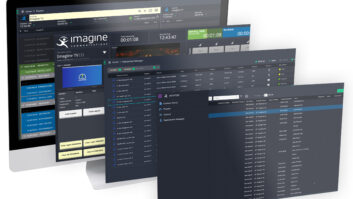By nearly all measures, connected TV (CTV) advertising revenues are in rude health and set for sharp growth. This is driven mainly by programmatic which, according to IAB Europe’s latest programmatic report, accounts for over 50 per cent of all digital video advertising, with IAB Europe’s Daniel Knapp commenting that “programmatic is on the path to become the default infrastructure for digital advertising.”
The story looks good on the consumer side, too. Data from SpotX in IAB Europe’s Guide to the Programmatic CTV Opportunity in Europe, revealed that the majority of CTV viewers (69 per cent) say they watch ad-supported content. Meanwhile, according to eMarketer, in the UK alone the number of CTV users in the UK in 2024 will reach 44.4 million – which accounts for two thirds of the population.
This story is consistent with developments elsewhere. In the U.S., programmatic spend for CTV is expected to hit $8.67 billion in 2022, up from $6.73 billion in 2021 and $4.36 billion in 2020. With such growth predicted, it’s easy to see why so much money is being spent on building programmatic CTV stacks. The biggest recent example was of course Magnite’s acquisition of SpotX for $1.14 billion which, despite the big number, I actually believe could prove to be a bit of a steal.
However… there is a large roadblock looming for CTV. And it’s getting bigger.
The revenue opportunity in CTV is clear to see, but it is a complicated business, and realising CTV’s true value is proving difficult. Workflows are incredibly complex and require constant monitoring – trading is happening in real-time which requires an “always-on” approach from the streaming provider. Many vendors are involved which means that critical processes like troubleshooting, for instance, can be beset by delays – of days or even weeks – meaning revenues can be severely damaged.
Picture the scene: An ad op at a streaming provider notices their fill-rate dropping on CTV. So they contact their ad server. Then they wait… for… a… response. When it comes there is an instruction to contact the dynamic ad insertion (DAI) provider. And they direct the ad op back to the ad server, and all the while there’s an error somewhere and it’s impacting revenues. The problem with a programmatic workflow where multiple vendors are involved is that each one only sees their part of the puzzle. And some may be less responsive than you’d like. Plus, each one will tend to be protective about their own systems, so it may require a fair bit of digging from the ad op to uncover the true source of the issue.
In an always on, real-time environment this approach can seriously hinder revenues. As the CTV pie grows, then so will the errors. And revenues lost to slow troubleshooting will become a big headache for all concerned. In the highly competitive world of CTV advertising, the margins for error are going to become incredibly tight. Responding quicker to errors could be the difference between success and failure.
So is the CTV story one of success, as is being projected now? Or will it actually become one of missed opportunity?
The latter will certainly be the narrative for some streaming providers. But I do believe that many will see the roadblock enough in advance to try to do something about it and take control of the visibility and oversight of their ad stack. I mentioned that Magnite’s acquisition of SpotX will prove to be a very good bit of CTV business. But even if they succeed in delivering a nice and neat one stop shop service for the video ad buying industry (which I think they will), then a chunk of their revenues will depend on addressing the wastage caused by several mechanisms in OTT streaming that are beyond their control, such as the player on the user’s device, the content delivery network (CDN), or the DAI provider.
For every vendor in the OTT and programmatic chains, it is vital that they find a way to provide the real-time insights required of streaming providers in order to thrive in the CTV age. Unnecessary wastage will hurt everybody. And beyond troubleshooting, better campaign data ultimately leads to better strategy and better campaigns. There is a golden opportunity for huge success through CTV and programmatic, but it is a highly competitive environment in which efficiency will be rewarded most. CTV advertising is about to really take off and there’ll be a lot of disruption along the way. I for one am looking forward to the ride!







